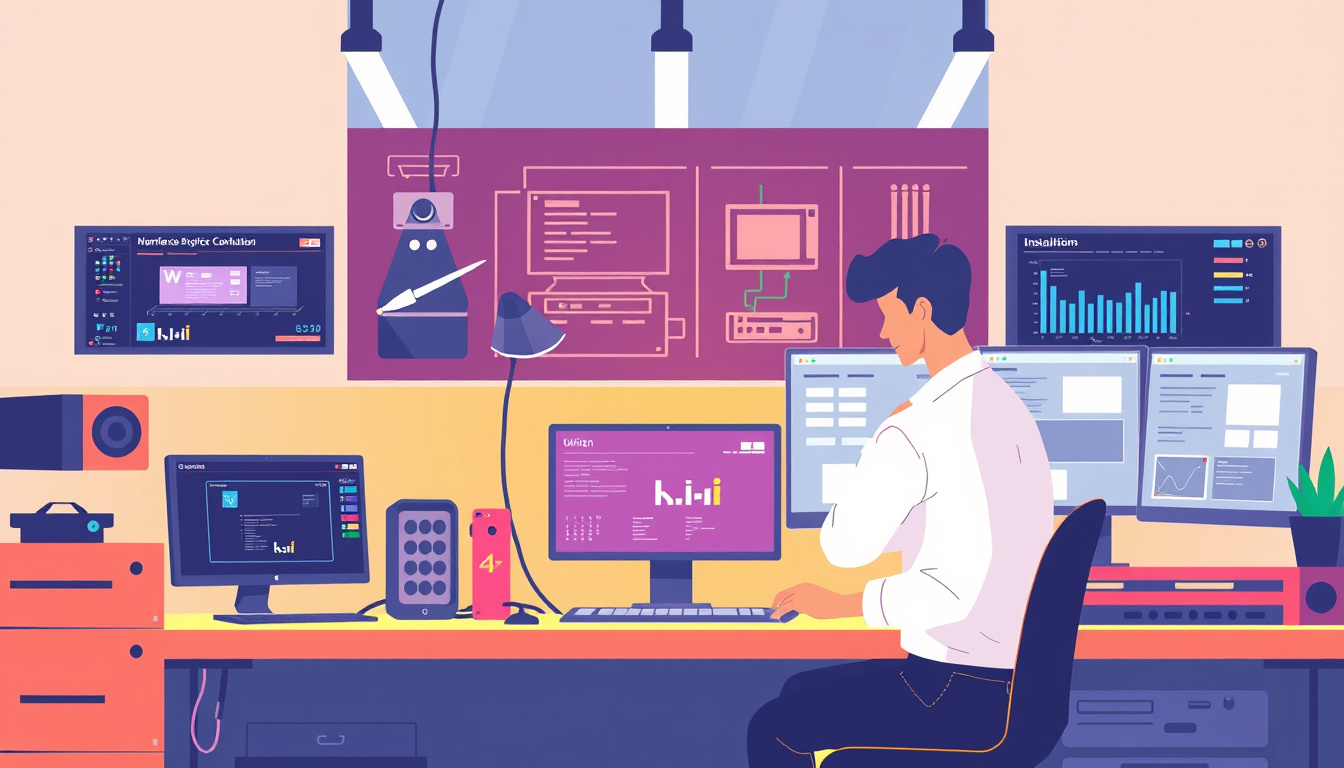Installation plays a crucial role in various domains, from setting up a new software application to configuring heavy machinery or artistic installations in galleries. Understanding the nuances of installation ensures that users can achieve optimal performance from their products or services. This guide will explore the definition of installation, common types, best practices for execution, and troubleshooting tips, making sure you are well-equipped for any installation task.
Understanding Installation
The term installation refers to the act of placing and configuring something for use. This can pertain to various contexts, including:
-
General Installation: The process of making equipment, machinery, or furniture ready for use. This could involve assembling components, connecting necessary parts, or ensuring the system is operational.
-
Software Installation: In the digital realm, installation entails placing software programs onto a computer system, often involving a setup process that may include instructions, licenses, and configuration settings.
-
Art Installations: This unique form of installation refers to creating immersive environments that combine multiple elements or technologies, providing an interactive sensory experience.
-
Military or Industrial Installations: These refer to designated locations equipped for specific functions, such as bases or factories.

Common Types of Installation
-
Residential Installations: Often associated with home appliances, lighting fixtures, and HVAC systems. These installations may require knowledge of electrical systems and plumbing.
-
Commercial Installations: Typically involve larger or more complex setups in business environments, such as IT systems and telecommunications.
-
Industrial Installations: These may involve heavy machinery and large-scale equipment specifically designed for factories or production lines.
-
Software Installations: This includes desktop applications, mobile applications, and server configurations, often accompanied by documentation or online support.
-
Art Installations: These pieces require careful planning and execution to ensure elements are correctly placed and function as intended.
Best Practices for Installation
-
Preparation: Before beginning any installation, gather all the necessary tools and components. For software installations, ensure you have access to all required licenses and documentation.
-
Follow Instructions: Adhere to the manufacturers’ guidelines and recommendations for installation. This may involve step-by-step manuals or digital setup wizards that offer real-time support.
-
Safety First: For installations involving electrical or heavy equipment, prioritize safety by using appropriate protective gear and adhering to safety protocols.
-
Testing: After completing the installation, conduct thorough testing to ensure everything is functioning correctly. This is critical for software to avoid performance issues and for physical setups to confirm stability and accessibility.
-
Documentation: Maintain records of the installation process, including any challenges faced and resolutions applied. This proves invaluable for future references or system upgrades.
Troubleshooting Common Installation Issues
Even with careful planning, issues may arise during installation. Here are some common problems and solutions:
-
Software Not Installing Properly: Ensure that the device meets the system requirements and that no conflicting applications are running.
-
Incomplete Installation of Components: Double-check that all required parts and tools are on hand and that the assembly steps have been fully followed.
-
Equipment Malfunctioning after Installation: Verify connections and settings to ensure everything is correctly aligned. Regular maintenance checks can also help identify underlying problems.
-
Art Installations Not Displaying Correctly: Evaluate the placement of different components and consider environmental factors such as lighting and visitor access.
Conclusion
Mastering the art of installation is essential regardless of the arena—be it technology, industrial equipment, or creative arts. By understanding the various aspects of installation, you can ensure a smoother setup process, enhance user experience, and extend the lifespan of the installed systems. By following best practices and knowing how to troubleshoot common issues, you can become proficient in installations and achieve lasting success in any setup endeavor.



